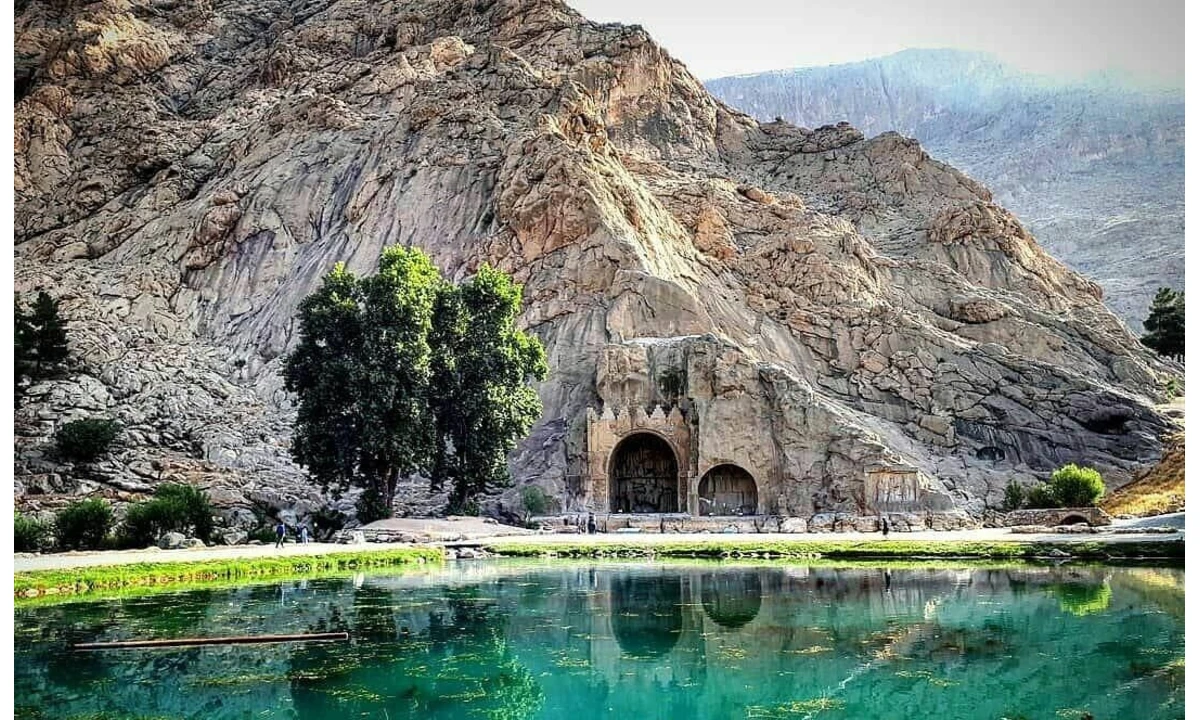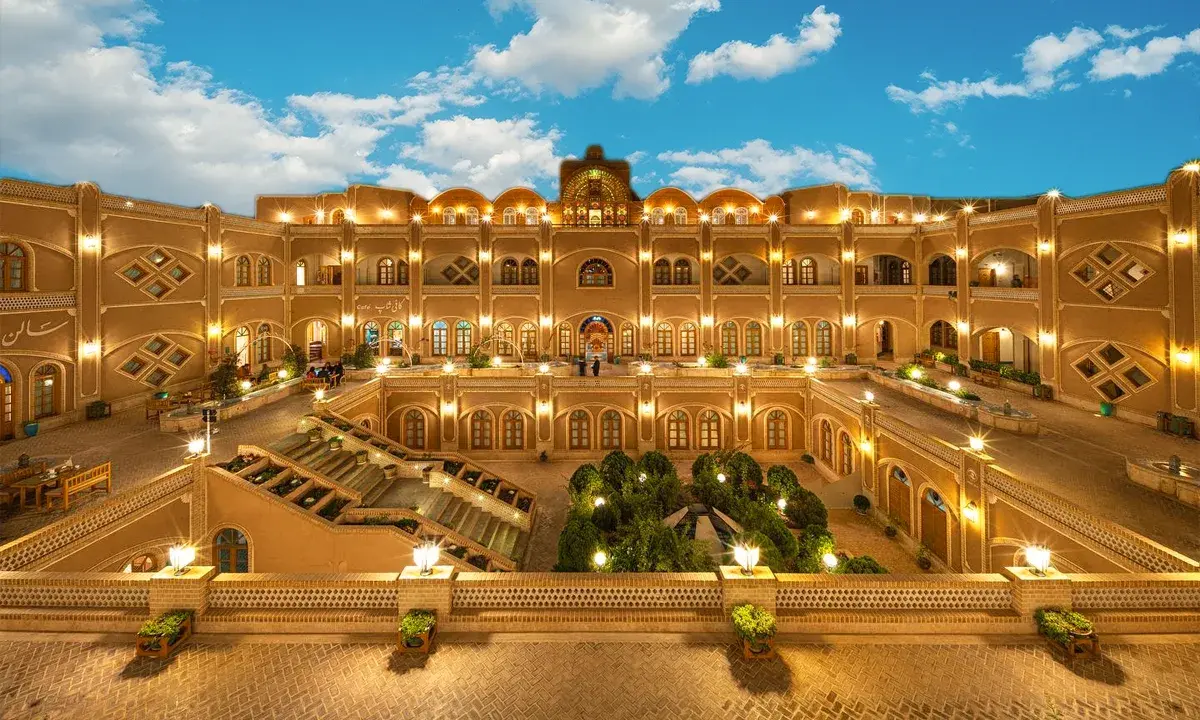Takht-e Soleyman; The mysterious treasures of Iranian history
![]() Author : asal | Date : Tuesday 05 March 2024 10:31
Author : asal | Date : Tuesday 05 March 2024 10:31

Takht-e Soleyman, also known as the Azar Goshnasb fire temple, is a significant historical complex located near Takab and the village of Takht-e-Soleyman in West Azarbaijan province, merely 45km northeast of Takab. Through extensive excavation efforts, archaeologists have unveiled the largest Sassanian structure buried beneath the soil, shedding light on the rich history and grandeur of this ancient site.
Where is Takht-e Suleiman?
Takht-e Soleiyman sits in West Azarbaijan province, just 45 km northeast of Takab city. For over 3000 years, it has been inhabited by diverse civilizations including the Manae, Scythians, Medes, Parthians, and Persians. Presently, Takht-e Soleyman is home to Kurdish and Iranian Turkish communities.
What are the ways to travel to Takht-e Suleiman?
Plane: The nearest airport to Takht-e Soleyman is Urmia Airport. From there, you can reach Takab by taxi or bus, then continue to Takht-e Suleiman by private car or taxi.
Train: The closest railway station to Takht-e Suleiman is Takab railway station. It's accessible by taxi or bus from there.
Private car: If traveling from Tehran, the route goes through Qazvin and Zanjan, then onto Bijar Road towards Takab. Follow the signs to Nusrat Abad village and Takht-e Soleyman.
The distance from Tehran to Takht-e Suleiman is approximately 700 km, taking roughly 8 hours by car.
Read More:✔️ Temple of Anahita; the guardian of the water
Takht-e Soleyman: A Tale of Fame
Throughout its storied history, Takht-e Soleyman has borne witness to myriad events, each shaping its ancient legacy. Legend holds that it was originally commissioned by Bahram Gur, though it met destruction during the Persian-Roman conflict. Subsequent rulers undertook its reconstruction, evident in the plethora of ancient monuments scattered across the site.
The vicinity surrounding Takht-e Soleyman served as a thriving residential area, with traces of habitation dating back 3000 years. This historical landmark has seen the reigns of various empires, from the Medes to the Ilkhanids, Sasanians, Parthians, and Achaemenids, each leaving their indelible mark. Today, visitors to Takht-e Soleymani can anticipate continual discoveries at every turn.
Within this realm lie vestiges of ancient Mana’s life, as evidenced by archaeological findings. Remnants of villages within Takht-e Soleyman attest to its millennia-old settlement, unraveling the tapestry of its enduring history.
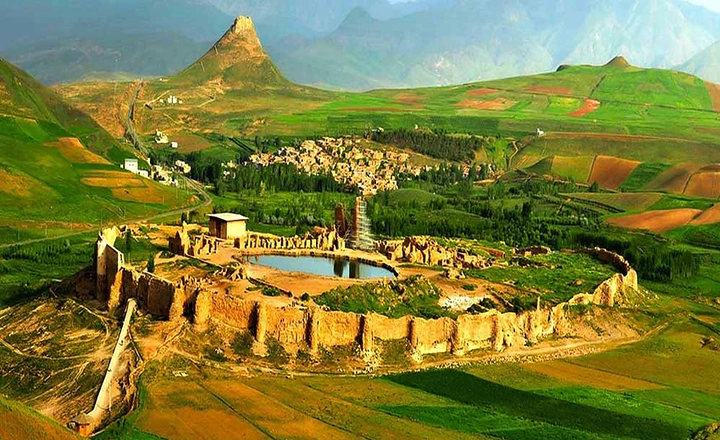
What are the attractions around Takht-e Suleiman?
Discover the myriad attractions surrounding Takht-e Suleiman, from ancient monuments to scenic landscapes, inviting exploration and discovery. Immerse yourself in the rich tapestry of history and natural beauty that adorn this revered site.
A mysterious lake
Adjacent to Takht-e Soleyman rests a tranquil lake, casting a spell with its placid surface. While signs caution against swimming, its unfathomable depths and rumored therapeutic qualities have birthed a tapestry of captivating folklore among locals, its mineral-laden waters enhancing its mystical charm.
Numerous tales surround the lake's origin, attributing its creation to Solomon's staff or the birth of Jesus. According to one legend, when Solomon struck his staff, a spring emerged, evolving into the mysterious lake seen today. Another narrative tells of King Hormuzd, upon receiving soil from Mary, erecting structures where the bearer perished. Some legends claim the lake conceals ancient treasures, from Solomon's era to valuables hidden during wars. Despite reports of riches submerged within its depths, the lake's saline and sediment-laden waters have thwarted any attempts at discovery, leaving these accounts shrouded in mystery and speculation.
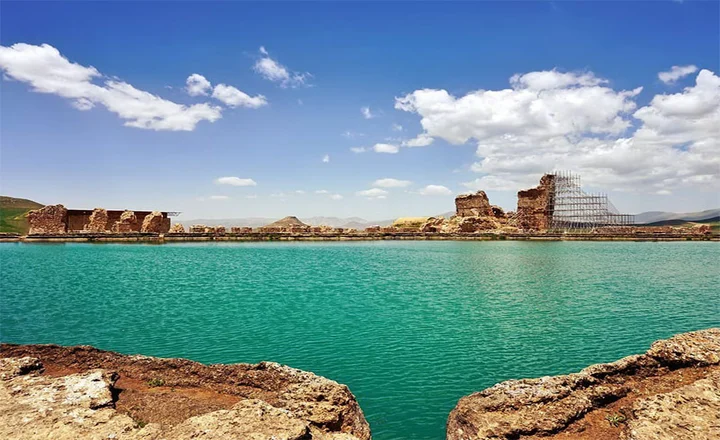
Anahita Temple
The Anahita Temple stands as a renowned historical monument within Takht Suleiman. Anahita, among the revered Zoroastrian goddesses, has inspired the construction of various edifices worldwide, including this sacred site nestled in Takht-e Soleyman.
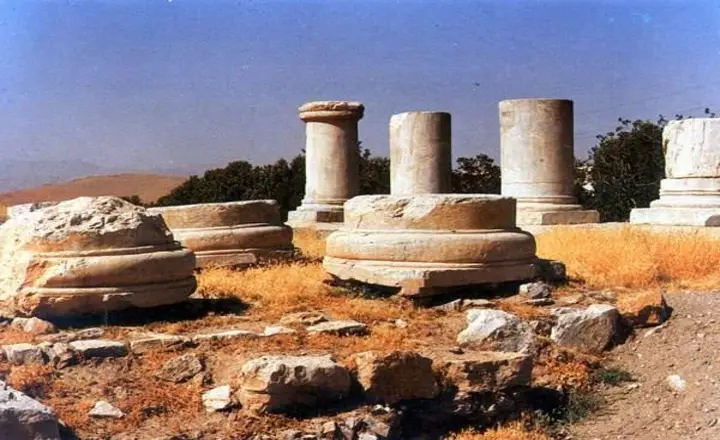
Exploring Heritage: The Takht-e Soleyman Museum
The Takht Suleiman Museum offers an array of attractions, including columns, stone artifacts, and vintage photographs, captivating visitors with glimpses of the past. Within the corners of Takht Suleiman, echoes of bygone eras resonate, revealing remnants of ancient life in this majestic setting.
Among the historical monuments scattered throughout Takht-e Soleyman are the pillared hall, Ilkhani bathhouse ruins, protective corridors, and remnants of blacksmith and pottery kilns. Additionally, exquisite relics dating from the Islamic era in Iran, such as remnants of mosques, council halls, and porticoes, further enrich the site's allure.
The historical splendor of Takht-e Suleiman draws numerous tourists annually, offering an immersive journey through the country's rich history. By beholding the captivating and ancient artifacts within Takht-e Soleyman, visitors carry a piece of the past with them, enduring cherished memories for years to come.
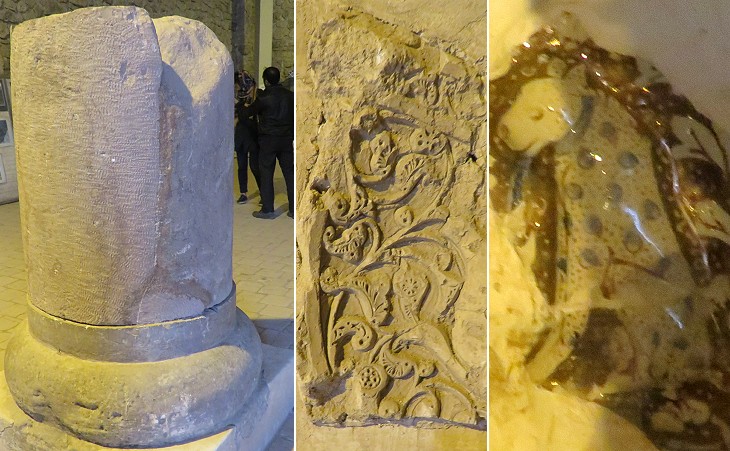
Whispers of Nature: The Intriguing Phenomenon of Floating Grass
Surrounding Takht Suleiman lies a captivating sight: a floating lawn gently swaying with the breeze, earning it the name "moving grass." Covering an area of 100 cubic meters, this natural spectacle offers delightful entertainment as it dances upon the water's surface. The tranquil ambiance is further enhanced by the melodious chirping of birds, composing a harmonious symphony that envelops the surrounding nature. Immerse yourself in this enchanting experience, where historical and natural wonders converge, offering hours of blissful enjoyment.
Read More:✔️ Chogha Zanbil; Oldest Elamite Ziggurat in the Near East
Last Word
Takht-e Soleyman stands as a beacon of mystery and intrigue, preserving the enigmatic treasures of Iranian history. Through its ancient monuments, captivating landscapes, and whispered tales of the past, it offers a glimpse into the rich tapestry of Iran's cultural heritage. As visitors traverse its hallowed grounds and delve into its secrets, they become part of a timeless journey, connecting with the essence of Iranian history and leaving with a profound appreciation for its enduring mysteries.
FAQ
What is Takht-e Soleyman?
Takht-e Soleyman, also known as the Throne of Solomon, is an ancient archaeological site located in West Azerbaijan Province, Iran. It holds significant historical and cultural importance, representing various civilizations that once inhabited the region.
What historical significance does Takht-e Soleyman hold?
Takht-e Soleyman is renowned for its association with various ancient civilizations, including the Sassanian, Parthian, and Achaemenid empires. It served as a major religious and cultural center, featuring a Zoroastrian fire temple, palaces, and other structures.
Why is Takht-e Soleyman considered mysterious?
Takht-e Soleyman's mysterious aura stems from its enigmatic features and legends surrounding its origin. Stories attribute its creation to King Solomon or the birth of Jesus, adding to its allure and fascination.
Can visitors explore Takht-e Soleyman?
Yes, Takht-e Soleyman is open to visitors who can explore its ancient ruins, including the fire temple, palace, and surrounding landscapes. Guided tours are available to provide insights into its history and significance.




